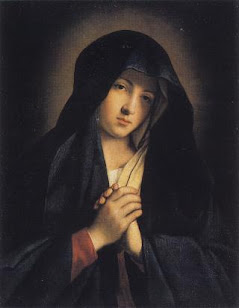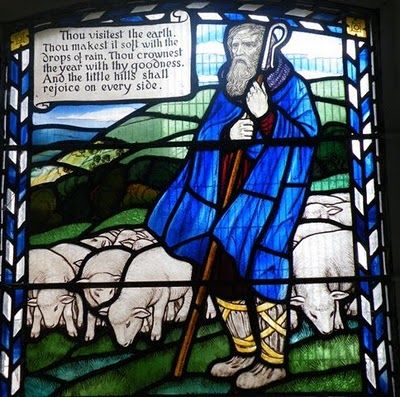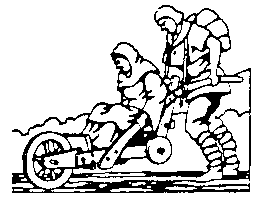Today, July 19, we celebrate the feast day of Saint Macrina the Younger (330-379), Virgin of the Church. Macrina was the granddaughter of Saint Macrina the Elder and sister of Saint Basil, Saint Gregory of Nyssa, and Saint Peter of Sebastea. Saint Macrina lived a holy life, providing inspiration and encouragement to her brothers, forming her own religious community, and serving others to the glory of the Lord.
Macrina was born in Cesarea, the eldest child of Basil and Emmelia. Her mother raised the family in piety, based upon the Book of Wisdom, and chanted the psaltery with the children each day. At the young age of 12, Macrina was engaged to be married. Sadly, her fiancé died, and Macrina committed herself to the Lord, vowing perpetual chastity, and deciding to never marry. Instead, she dedicated herself to her family, helping raise her brothers, and assisting her mother with the household tasks. She became known to her holy brothers as “Macrina the Great” and “Macrina the Teacher,” both signs of the high respect they held her in.
Saint Macrina became well known as a holy woman and instructed many young women religiously. She is recognized and honored as one of the most prominent nuns of the Easter Church, and she founded an order on the family’s estate in Pontus, where many religious women flourished in their faith ender her direction. With her brother, Peter, she constructed both a monastery and convent. Macrina embraced an ascetic life, living in austerity, and spending much time in contemplation and prayer. Her brother, Saint Gregory of Nyssa, wrote a work entitled Life of Macrina in which he describes her sanctity throughout her life.
Near the end of her life, Macrina became gravely ill and was close to death. Saint Gregory of Nyssa went to see her and found her laying on a wood board and wearing a hair-shirt. He carefully lifted her and placed her on a bed. The dying woman, seeing her last hour was at hand, remembered all the good things God had given her during her lifetime and gave glory to Him. She said:
“Oh, Lord! Thou didst destroy the fear of death. Because of Thy sacrifice, true life begins when the present life finishes. We will sleep for a while and then, to the sound of the trumpet, we will resurrect. Thou didst save us from the curse of the sin, redeeming us from both sin and its curse.”
Kissing an iron Crucifix that held the relics of the Cross of the Savior, which she always had close to her, Saint Macrina serenely died. She was buried beside her parents, where her relics are venerated today.
It is principally to Saint Gregory of Nyssa that we are indebted for what we know of his admirable sister. In a panegyric on her he mentions two miracles: one in which St. Emmelia cured a growth that Macrina was suffering, by a simple sign of the cross; one in which Macrina herself healed the eye disease of a little girl. Gregory states that many other cures had been attributed to her intervention, on good grounds. The picture he gives of her is that of an exceptionally able and endearing woman with a secure set of values, possessed of that refreshing calmness of spirit that comes from close union with God. As he said of her, she "reached the highest summit of human virtue by true wisdom."
Merciful God, who didst call thy servant Macrina to reveal in her life and her teaching the riches of thy grace and truth: Mercifully grant that we, following her example, may seek after thy wisdom and live according to her way; through Jesus Christ our Savior, who liveth and reigneth with thee and the Holy Spirit, one God, for ever and ever. Amen.
Prayer of Saint Macrina the Younger before her death:
Recorded by St. Gregory of Nyssa:
You have released us, O Lord, from the fear of death. You have made the end of life here on earth a beginning of true life for us. You let our bodies rest in sleep in due season and you awaken them again at the sound of the last trumpet. You entrust to the earth our bodies of earth which you fashioned with your own hands and you restore again what you have given, transforming with incorruptibility and grace what is mortal and deformed in us. You redeemed us from the curse and from sin, having become both on our behalf. You have crushed the heads of the serpent who had seized man in his jaws because of the abyss of our disobedience. You have opened up for us a path to the resurrection, having broken down the gates of hell and reduced to impotence the one who had power over deaths. You have given to those who fear you a visible token, the sign of the holy cross, for the destruction of the Adversary and for the protection of our life.
God eternal, Upon whom I have cast myself from my mother’s womb, Whom my soul has loved with all its strength, To whom I have consecrated flesh and soul from my infancy up to this moment, Put down beside me a shining angel to lead me by the hand to the place of refreshment where is the water of repose near the lap of the holy fathers. You who have cut through the flame of the fiery sword and brought to paradise the man who was crucified with you, who entreated your pity, remember me also in your kingdom, for I too have been crucified with you, for I have nailed my flesh out of reverence for you and have feared your judgments. Let not eh dreadful abyss separate me from your chosen ones. Let not the Slanderer stand against me on my journey. Let no my sin be discovered before your eyes if I have been overcome in any way because of our nature’s weakness and have sinned in word or deed or thought. You who have on earth the power to forgive sins, forgive me, so that I may draw breath again and may be found before you in the stripping off of my body without strain or blemish in the beauty of my soul, but may my soul be received blameless and immaculate into your hands as an incense offering before your face.
Year 2: Day 200 of 365
Prayer Intentions: Lives of virtue; Families rich in faith and grace
Requested Intentions: Healing, successful relationships for son, financial success (J); Success of a company (L); For a religious society (J); Healing of a husband, strength as a faithful caregiver (D); Healing of a son (T); Financial security, Healing and guidance (M); Healing of a heart and relationship (V); Employment for daughter (J); For a marriage that glorifies the Lord (K); Resolution of family situation, parents’ health (A); Positive results (C); For a son’s employment, faith, and relationships (S); Restored family relationships (A); Healthy conception and delivery of children (J); For a girlfriend’s recovery from a debilitating mental illness (J); For a daughter’s successful examination results (A); Occupational success, health and safety of family (S); Reduction in anxiety for husband, financial freedom (S); Healing for a sister-in-law (J); For a family experiencing a difficult child custody case (M); Reunification of a family struggling with separation (M): For a son struggling with mental illness (M); Successful examination results (B); To be freed from the chains of sin (J); Admission to a good university (M); For successful surgery (T); For a mother’s mental health and for kindness and forgiveness, for housing problems, for dental health (T).
Why pray the Rosary every day for a year?
Each time the Blessed Virgin has appeared-- whether it be to Saint Bernadette Soubirous at Lourdes; to Lucia, Jacinta, and Francisco at Fatima; or to Mariette Beco at Banneux-- she has asserted the importance, saving grace, and power of praying the Holy Rosary on a daily basis. Based upon her words, the Rosary is penance and conversion for sinners, a pathway to peace, an end to war, and a powerful act of faith in Jesus Christ. Pope Paul VI presented the Rosary as a powerful means to reach Christ "not merely with Mary but indeed, insofar as this is possible to us, in the same way as Mary, who is certainly the one who thought about Him more than anyone else has ever done."
To show us how this is done, perhaps no one has been more eloquent than the great Cardinal Newman, who wrote: "The great power of the Rosary consists in the fact that it translates the Creed into Prayer. Of course, the Creed is already in a certain sense a prayer and a great act of homage towards God, but the Rosary brings us to meditate again on the great truth of His life and death, and brings this truth close to our hearts. Even Christians, although they know God, usually fear rather than love Him. The strength of the Rosary lies in the particular manner in which it considers these mysteries, since all our thinking about Christ is intertwined with the thought of His Mother, in the relations between Mother and Son; the Holy Family is presented to us, the home in which God lived His infinite love."
As Mary said at Fatima, "Jesus wants to use you to make Me known and loved. He wishes to establish the devotion to My Immaculate Heart throughout the world. I promise salvation to whoever embraces it; these souls will be dear to God, like flowers put by Me to adorn his throne."

It is there in the story of Cuthman, the working together
Of man and God like root and sky; the son
Of a Cornish shepherd, Cuthman, the boy with a cart,
The boy we saw trudging the sheep-tracks with his mother
Mile upon mile over five counties; one
Fixed purpose biting his heels and lifting his heart.
We saw him; we saw him with a grass in his mouth, chewing
And traveling. We saw him building at last
A church among whortleberries…
(Christopher Fry)
Today, February 8, we celebrate the feast of Saint Cuthman of Steyning (died, ninth century), English church builder and miracle worker. The life of Saint Cuthman is one of holy legend, recounting his various exploits made possible only through the grace of God. Regardless of the veracity of these legends, what we take from the life of Saint Cuthman is a profound respect and love for his mother, a dedicated service to the Lord, and unwavering faith—all lessons we can apply to our own lives today.
Cuthman was born into a wealthy English family in Chidham, and worked as a shepherd, grazing the family’s flocks. Pious from an early age, he was steadfast and faithful, never failing in his religious observances or his work in the fields. It is said that through the power of prayer, Cuthman was able to keep his grazing sheep safe in a circle under his watchful eye. Following his father’s death, who per legend was killed by Vikings, he was left to care for his sick and elderly mother, who subsequent to a disease was unable to walk without assistance.
One afternoon, while praying over his sheep, Saint Cuthman received a command from the Lord: to travel east into the pagan countryside and erect a church. The Lord promised that Cuthman would known where to erect this church by a heavenly sign. Saint Cuthman desired nothing more than to obey, but worried about his mother. She could not be left behind, and it would be incredibly difficult to take her with him. However, ever obedient, he sold his flocks and bought a cart in which to transport his mother. Tying a rope halter around his neck, he set off over the bumpy and muddy roads, pulling his mother behind him.
Now, this travel was not easy, given the condition of the roads and the weight of his mother. Yet Saint Cuthman proceeded night and day, rarely stopping for food or rest until his halter frayed and snapped. Having used all his money to buy the cart, he was unable to buy more rope, so instead cut some elder branches to fashion a new halter. The farmers in a nearby field, observing what they considered foolish behavior, mocked him. But Cuthman continued on his way, saying to them: “Men mock and heaven shall weep!” at which a rainstorm flooded their fields and destroyed their crops. It is said that every spring these same fields are flooded.
Saint Cuthman continued on his journey, pulling his mother, until his elder-twig halter snapped. This happened by a pagan mound topped by a stone (see picture), and Cuthman took this as the sign where he should erect his church. He prayed on the spot:
Father Almighty, you have brought my wanderings to an end; now enable me to begin this work. For who am I, Lord, that I should build a house to your Name? If I rely on myself, it will be of no avail, but it is you who will assist me. You have given me the desire to be a builder; make up for my lack of skill, and bring the work of building this holy house to its completion.
The wooden church built by Saint Cuthman was built in the spot of the more modern Saint Andrew’s Church in Steyning,, Sussex. Together with his mother, he lived in a small hut nearby while his days were spent building a cathedral as promised to the Lord. Saint Cuthman used the pagan stone in the alter of his church, to assure that local pagans would come to venerate there, leading to their conversion. (The stone was later removed during excavations and placed outside the church of Saint Andrew).
During the course of construction, many miracles occurred at the intercession of Saint Cuthman. For example, while fitting the roof beams, a stranger appeared to assist. This stranger, who legend tells us was Saint Andrew, hung his leather gloves on a sunbeam while assisting Cuthman. On another occasion, when Cuthman was feeling discouraged by obstacles to construction, a stranger appeared and told him how to remedy the trouble, saying;
" Nothing is wanting to those that fear the Lord."
Saint Cuthman, overcome with awe, asked for the stranger’s name.
" I am He," was the answer, "in whose name thou buildest this temple."
Saint Cuthman was similarly targeted by a local pagan wise-woman and the devil. Objecting to his Christianity and “divine works,” she stole his oxen to use as her own. In return, Cuthman harnessed her two sons to his plow, using them as substitutes, and so successfully rebutted her curse that the woman flew high into the air. Upon landing, legend tells us that the ground swallowed her hole, with the devil claiming her as his own. The devil, for his part, attempted to dam the entire area in one evening and flood away the holy church, but Saint Cuthman tricked the devil by knocking roosters off their perches (so they would signal daybreak early) and flashing a candle behind a sieve to simulate the rising sun. The devil fled, having failed in his task.
Saint Cuthman lived beside his church, building a robust Christian community. Upon his death, he was venerated there, with many pilgrims reporting miraculous cures at his holy intercession. His relics were later translated to the Benedictine monastery at FeCamp, France.
The life of Saint Cuthman is a reminder and example of filial piety, prayer, hard work, and faith. His life and legends serve to remind us of the importance of obedience, confidence in the Lord, and steadfast forbearance in the face of adversity and discouragement. We are called to remember that “Nothing is wanting to those who fear the Lord.”
Year 2: Day 39 of 365
Prayer Intentions: Piety, Prayer, Hard Work.
Requested Intentions: Assistance with a legal matter, financial freedom (R); Healing for a friend (M); For a son in medical school (H); Financial assistance (M); Successful employment (N): Freedom from mental illness for a friend (L); For successful marriage (N); For friends having and recovering from surgery; for the reduction of a brain tumor (L); For resolution of a housing crisis (P); For a brother who is struggling financially, for a son who is struggling academically (B); For financial security for a friend (C); Success in business; familial happiness and health (J); Health and recovery of a sister (I); Development of a chaste relationship pleasing to the Lord (E); Successful surgery of mother; delivery of daughters’ babies (L); For a friend suffering with depression (M); For a friend entering religious life (R); Success of a parish men’s retreat (H); For a mother who is grieving; for the soul of a dearly departed son (M); Reconciliation of a marriage (M); End to grief after death of son (B&C); End to grief (S); Successful marriage (N); For an RCIA candidate struggling with financial and family stressors (O); Freedom from anxiety regarding medical procedure (J); Return home of an ill mother, peace and financial security (J); Healing of a father following stroke (S).
Of man and God like root and sky; the son
Of a Cornish shepherd, Cuthman, the boy with a cart,
The boy we saw trudging the sheep-tracks with his mother
Mile upon mile over five counties; one
Fixed purpose biting his heels and lifting his heart.
We saw him; we saw him with a grass in his mouth, chewing
And traveling. We saw him building at last
A church among whortleberries…
(Christopher Fry)
Today, February 8, we celebrate the feast of Saint Cuthman of Steyning (died, ninth century), English church builder and miracle worker. The life of Saint Cuthman is one of holy legend, recounting his various exploits made possible only through the grace of God. Regardless of the veracity of these legends, what we take from the life of Saint Cuthman is a profound respect and love for his mother, a dedicated service to the Lord, and unwavering faith—all lessons we can apply to our own lives today.
Cuthman was born into a wealthy English family in Chidham, and worked as a shepherd, grazing the family’s flocks. Pious from an early age, he was steadfast and faithful, never failing in his religious observances or his work in the fields. It is said that through the power of prayer, Cuthman was able to keep his grazing sheep safe in a circle under his watchful eye. Following his father’s death, who per legend was killed by Vikings, he was left to care for his sick and elderly mother, who subsequent to a disease was unable to walk without assistance.
One afternoon, while praying over his sheep, Saint Cuthman received a command from the Lord: to travel east into the pagan countryside and erect a church. The Lord promised that Cuthman would known where to erect this church by a heavenly sign. Saint Cuthman desired nothing more than to obey, but worried about his mother. She could not be left behind, and it would be incredibly difficult to take her with him. However, ever obedient, he sold his flocks and bought a cart in which to transport his mother. Tying a rope halter around his neck, he set off over the bumpy and muddy roads, pulling his mother behind him.
Now, this travel was not easy, given the condition of the roads and the weight of his mother. Yet Saint Cuthman proceeded night and day, rarely stopping for food or rest until his halter frayed and snapped. Having used all his money to buy the cart, he was unable to buy more rope, so instead cut some elder branches to fashion a new halter. The farmers in a nearby field, observing what they considered foolish behavior, mocked him. But Cuthman continued on his way, saying to them: “Men mock and heaven shall weep!” at which a rainstorm flooded their fields and destroyed their crops. It is said that every spring these same fields are flooded.
Saint Cuthman continued on his journey, pulling his mother, until his elder-twig halter snapped. This happened by a pagan mound topped by a stone (see picture), and Cuthman took this as the sign where he should erect his church. He prayed on the spot:
Father Almighty, you have brought my wanderings to an end; now enable me to begin this work. For who am I, Lord, that I should build a house to your Name? If I rely on myself, it will be of no avail, but it is you who will assist me. You have given me the desire to be a builder; make up for my lack of skill, and bring the work of building this holy house to its completion.
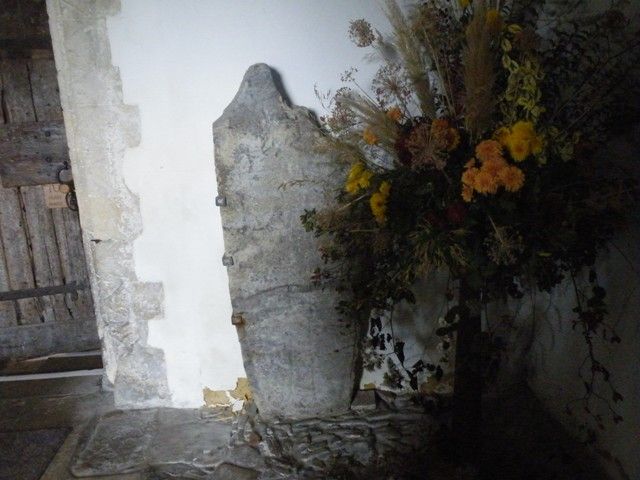 |
| The stone of Saint Cuthman |
During the course of construction, many miracles occurred at the intercession of Saint Cuthman. For example, while fitting the roof beams, a stranger appeared to assist. This stranger, who legend tells us was Saint Andrew, hung his leather gloves on a sunbeam while assisting Cuthman. On another occasion, when Cuthman was feeling discouraged by obstacles to construction, a stranger appeared and told him how to remedy the trouble, saying;
" Nothing is wanting to those that fear the Lord."
Saint Cuthman, overcome with awe, asked for the stranger’s name.
" I am He," was the answer, "in whose name thou buildest this temple."
Saint Cuthman was similarly targeted by a local pagan wise-woman and the devil. Objecting to his Christianity and “divine works,” she stole his oxen to use as her own. In return, Cuthman harnessed her two sons to his plow, using them as substitutes, and so successfully rebutted her curse that the woman flew high into the air. Upon landing, legend tells us that the ground swallowed her hole, with the devil claiming her as his own. The devil, for his part, attempted to dam the entire area in one evening and flood away the holy church, but Saint Cuthman tricked the devil by knocking roosters off their perches (so they would signal daybreak early) and flashing a candle behind a sieve to simulate the rising sun. The devil fled, having failed in his task.
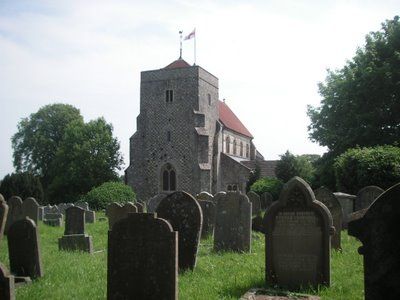 |
| The Church of Saint Andrew, located on the site of Saint Cuthman's Church |
The life of Saint Cuthman is a reminder and example of filial piety, prayer, hard work, and faith. His life and legends serve to remind us of the importance of obedience, confidence in the Lord, and steadfast forbearance in the face of adversity and discouragement. We are called to remember that “Nothing is wanting to those who fear the Lord.”
Year 2: Day 39 of 365
Prayer Intentions: Piety, Prayer, Hard Work.
Requested Intentions: Assistance with a legal matter, financial freedom (R); Healing for a friend (M); For a son in medical school (H); Financial assistance (M); Successful employment (N): Freedom from mental illness for a friend (L); For successful marriage (N); For friends having and recovering from surgery; for the reduction of a brain tumor (L); For resolution of a housing crisis (P); For a brother who is struggling financially, for a son who is struggling academically (B); For financial security for a friend (C); Success in business; familial happiness and health (J); Health and recovery of a sister (I); Development of a chaste relationship pleasing to the Lord (E); Successful surgery of mother; delivery of daughters’ babies (L); For a friend suffering with depression (M); For a friend entering religious life (R); Success of a parish men’s retreat (H); For a mother who is grieving; for the soul of a dearly departed son (M); Reconciliation of a marriage (M); End to grief after death of son (B&C); End to grief (S); Successful marriage (N); For an RCIA candidate struggling with financial and family stressors (O); Freedom from anxiety regarding medical procedure (J); Return home of an ill mother, peace and financial security (J); Healing of a father following stroke (S).
Subscribe to:
Posts (Atom)

